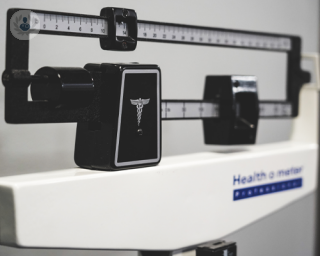Weight loss injections
What are weight loss injections, and what are the different types?
Weight loss injections have garnered significant attention as an innovative approach to combating obesity. These injectable medications are designed to assist individuals in achieving and maintaining a healthier weight by modulating appetite, enhancing metabolic functions, and promoting fat loss. As obesity continues to be a major public health concern, these injections offer a valuable tool in the multifaceted approach required to address this complex issue.
One of the primary medications used in weight loss injections is semaglutide, which is marketed under brand names like Wegovy and Ozempic. Initially developed to manage type 2 diabetes, semaglutide functions as a GLP-1 (glucagon-like peptide-1) receptor agonist. GLP-1 is a hormone that plays a crucial role in appetite regulation and glucose metabolism. By mimicking this hormone, semaglutide helps to increase feelings of fullness, reduce appetite, and slow gastric emptying. This leads to a decrease in overall caloric intake, which is essential for weight loss.
Another commonly used medication is liraglutide, known commercially as Saxenda. Similar to semaglutide, liraglutide is also a GLP-1 receptor agonist and has been shown to aid in weight loss by suppressing appetite and enhancing satiety. Clinical trials have demonstrated that individuals using liraglutide can achieve significant weight reduction compared to those on placebo.

How do weight loss injections compare to other weight loss methods such as diet, exercise, and oral medications?
Weight loss injections, such as semaglutide and liraglutide, have been shown to be more effective in achieving significant weight loss compared to traditional methods like diet and exercise alone. Clinical trials indicate that users of these injections can lose an average of 15% of their body weight, which is higher than the typical five to 10 percent weight loss seen with lifestyle modifications.
Compared to oral medications, weight loss injections often provide superior results because they directly target appetite-regulating hormones, leading to better appetite control and reduced caloric intake. However, the best outcomes are usually seen when injections are combined with diet, exercise, and behavioral changes.
What are the long-term health benefits and potential risks associated with using weight loss injections?
The long-term health benefits of weight loss injections include significant weight reduction, improved cardiovascular health, better glycemic control, and reduced risk of obesity-related conditions such as type 2 diabetes, hypertension, and sleep apnoea. However, there are potential risks and side effects, such as nausea, vomiting, diarrhoea, constipation, and in rare cases, pancreatitis and gallbladder disease. Long-term safety data is still being gathered, but current evidence suggests that these injections can be a safe and effective part of a comprehensive weight management plan when monitored by a healthcare provider.
How do individual factors, such as age, gender, and underlying health conditions, affect the efficacy and safety of weight loss injections?
Individual factors can significantly influence the efficacy and safety of weight loss injections. Age can affect metabolic rate and response to treatment, with younger individuals often experiencing better results. Gender differences in hormone levels and body composition can also impact effectiveness. Underlying health conditions, such as diabetes, cardiovascular diseases, or gastrointestinal disorders, may affect both the suitability and outcome of treatment. It is essential for healthcare providers to consider these factors when prescribing weight loss injections to tailor the approach to each individual's needs and ensure safety.
What lifestyle changes should accompany the use of weight loss injections to maximize their effectiveness?
To maximise the effectiveness of weight loss injections, individuals should adopt comprehensive lifestyle changes. This includes following a balanced, calorie-controlled diet rich in fruits, vegetables, lean proteins, and whole grains. Regular physical activity is crucial, aiming for at least 150 minutes of moderate-intensity exercise per week. Behavioral modifications, such as mindful eating, stress management, and adequate sleep, are also important. Continuous support from healthcare professionals, including nutritionists and fitness experts, can enhance the success of weight loss injections.
How accessible and affordable are weight loss injections for the general population?
Accessibility and affordability of weight loss injections can vary widely. These medications are often expensive, with costs that can be prohibitive for some individuals, especially those without insurance coverage. While some insurance plans may cover part of the cost, others may not, making affordability a significant barrier.
Additionally, availability can vary by region and healthcare system. Efforts to improve insurance coverage and reduce costs are necessary to make these treatments more accessible to a broader population. Patients should discuss financial options and potential assistance programs with their healthcare providers to explore ways to mitigate the expense.










